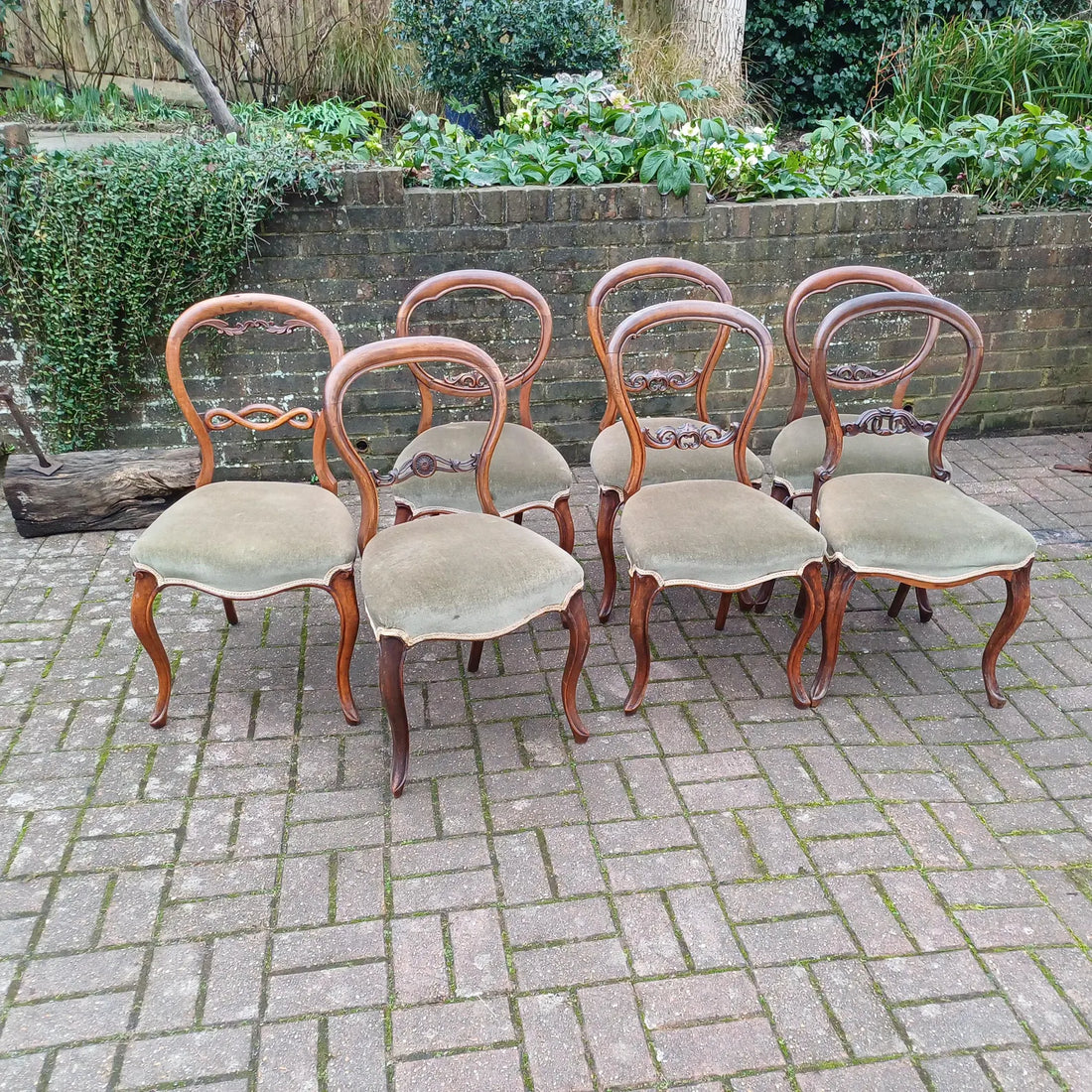
TVR Explain the Mystery of the Flexible Victorian Chair Back
Share

Ah, the Victorian dining chair—a marvel of craftsmanship, a survivor of time, and yet, occasionally, a bit wobbly. If you’ve ever encountered one with a slightly flexible back, congratulations! You’re in possession of a classic quirk that has puzzled buyers, sellers, and even seasoned antique dealers for generations.
Why Are There So Many Victorian Dining Chairs Still Around?
Victorian upholstered dining chairs were built to last. Unlike today’s mass-produced furniture, these beauties were made with high-quality hardwoods, built by true craftsmen, and designed to withstand the test of time.
- They were expensive from the start – A well-made Victorian dining chair could have cost nearly £1,000 in today’s money when first produced 150 years ago.
- They get reupholstered every 50 years or so – Keeping them looking fresh while maintaining their structural integrity.
- They’re still sturdy despite their age – Mostly. The one issue? That sneaky little “flex” in the backrest.

What’s the Deal With the ‘Flex’ in Chair Backs?
Within the trade, it’s a well-known phenomenon. Over time, the backs of many antique chairs develop a slight movement—not very loose, just a little bit of give.
Back in the golden days of my High Street shop, this was never an issue. A customer would express concern, and I’d confidently tell them:
“Just sit on it, the back will stiffen.”
Sure enough, they’d sit down, exclaim, “Oh yes, it does!” and more often than not, they’d buy the chair.
When asked why this happened, I’d shrug and say,
“I don’t know, they just do.”
That seemed to satisfy people. It was the good old days, after all.
But Then Came Online Selling…
Now that I trade online, I have sold over 20,000 products, including countless sets of beautiful Victorian dining chairs. I always mention in the descriptions that some chairs have a bit of flex, yet customers are still happy with them. But I could never quite explain the flex.
I’ve asked other antique dealers, auctioneers, and experts at fairs. The best answer I ever got?
“Well, it just happens.”
Not exactly scientific.
Enter Artificial Intelligence—The Chair Detective
While some folks remain skeptical of AI, I’ve found it a godsend for research. And at last, I have the answer!
The Science Behind the Wobbly Chair Back
It turns out there are two key reasons why antique chairs flex:
- Some were designed to flex intentionally – Yes, really! Some Victorian chairs were crafted with a slight give in the backrest to improve comfort. The backrest isn’t always directly connected to the seat in a rigid way, allowing for a little movement.
- Most chairs develop flex over time – While not originally built to wobble, antique chairs evolve into their slightly flexible state due to decades (or centuries) of use.
Here’s the Physics of It:
- Many Victorian chairs use mortise-and-tenon joints, which are strong but can loosen over time as wood expands and contracts.
- When you sit down, your weight pushes down on the seat, tightening the joints and stabilizing the backrest.
- The back legs (often connected to the backrest) compress slightly, making the chair feel solid while in use.
- Over the years, the glue dries out, creating slight movement when no weight is applied. But when you sit, the weight presses the joints together, temporarily reducing movement.
- Many antique chairs have splayed back legs—when you apply weight, the legs press inward, helping to stabilize the backrest.
The Good News: It Won’t Get Worse
Once the chair develops this gentle rocking motion, the deterioration process usually stops. Here’s why:
- The glue may have weakened, but the actual hardwood joints are incredibly strong.
- Once a slight flex appears, it rarely worsens unless the chair is severely mistreated.
- Chairs that rock very badly are rare and were likely not well-made to begin with.
Final Thoughts – It’s Just Physics!
For years, I had no idea why this happened. Turns out, it’s pure physics and the natural ageing process of wood and glue.
So, if you ever buy a beautiful Victorian dining chair and notice a bit of movement, don’t panic. It’s a well-earned quirk from over a century of use. Just sit down, and all will be well!
